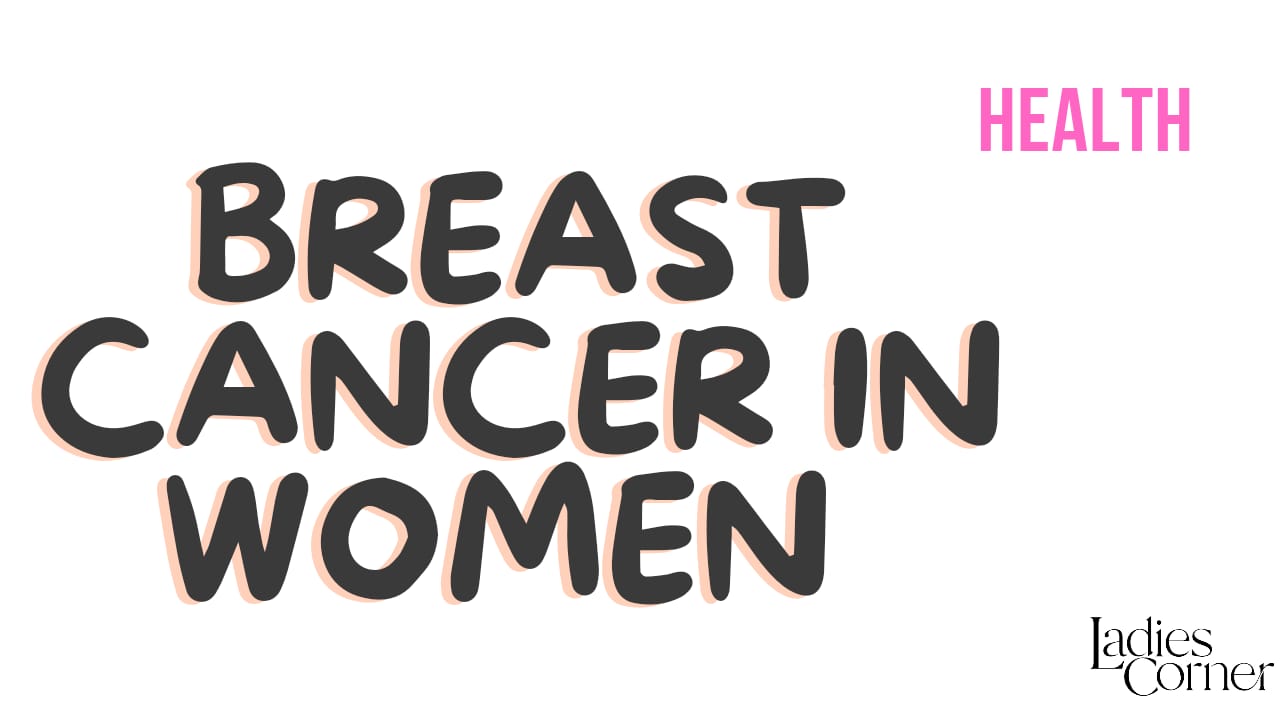
Breast cancer in women | Ladies Corner Health
Breast cancer is a significant health concern for women around the world. It is the most common cancer in women in developed and developing countries. Here are some key points about breast cancer in women:
Incidence and Prevalence: Breast cancer occurs when abnormal cells in the breast grow uncontrollably, forming a tumor. It is estimated that approximately 1 in 8 women will develop invasive breast cancer during their lifetime. The risk of breast cancer increases with age, and it is more commonly diagnosed in women over the age of 50.
Risk Factors: Several risk factors can increase a woman’s likelihood of developing breast cancer. These factors include age, family history of breast cancer or certain genetic mutations (e.g., BRCA1 and BRCA2), personal history of breast cancer or certain non-cancerous breast diseases, early onset of menstruation or late menopause, never having children or having the first child after the age of 30, hormone replacement therapy, obesity, and alcohol consumption.
Signs and Symptoms: Early breast cancer may not cause noticeable symptoms, so regular screening is essential. As cancer progresses, common symptoms may include a lump in the breast or armpit, changes in breast size or shape, skin changes on the breast (redness, dimpling, or puckering), nipple changes (inversion, discharge), and persistent pain in the breast or armpit.
Screening and Early Detection: Regular screening is crucial for early detection of breast cancer. Mammography is the primary screening tool for breast cancer and is recommended for women aged 50 and older. For women with a higher risk or family history of breast cancer, screening may start at an earlier age, and additional imaging tests or genetic testing may be considered.
Diagnosis: If an abnormality is detected during screening or if a woman experiences symptoms, further diagnostic tests, such as ultrasound, MRI, or biopsy, may be performed to determine if cancer is present.
Treatment: Treatment for breast cancer depends on various factors, including the stage of cancer, the woman’s overall health, and personal preferences. Common treatment options may include surgery (lumpectomy or mastectomy), radiation therapy, chemotherapy, hormone therapy, and targeted therapy. Treatment plans are often individualized to provide the best possible outcomes.
Survival Rates: Advances in early detection and treatment have improved breast cancer survival rates. The prognosis varies depending on the stage of the cancer at the time of diagnosis. The earlier breast cancer is detected and treated, the better the chances of successful treatment and long-term survival.
Support and Awareness: Breast cancer diagnosis and treatment can be emotionally and physically challenging. Women diagnosed with breast cancer often benefit from a strong support network, including family, friends, and support groups. Increased awareness about breast cancer, its risk factors, and the importance of regular screening can help improve outcomes.
Remember that each woman’s experience with breast cancer is unique, and medical professionals play a crucial role in guiding individuals through diagnosis, treatment, and recovery. Early detection, regular screenings, and a healthy lifestyle are essential for promoting breast health and reducing the impact of breast cancer on women’s lives.



